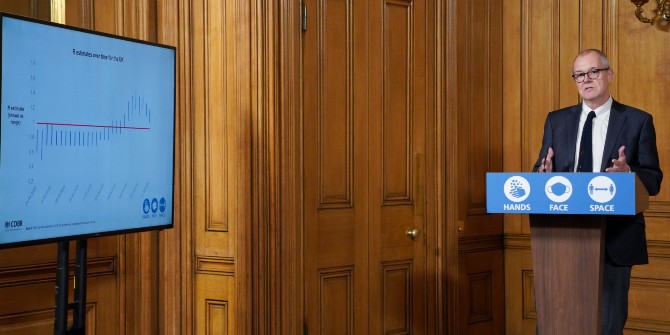Even if COVID-19 infection rates dwindle, it is now clear that the economy is unlikely to bounce back quickly. This raises the spectre of long-term unemployment. Richard Layard (LSE) explains how the government could draw on successful models used in the UK and elsewhere to avoid large numbers of people disappearing permanently from the workforce.
Widespread unemployment will be with us for a long time – potentially long after a vaccine or an effective treatment for COVID-19 has been found. Unemployment is already in excess of 10 per cent of the workforce in Britain, the US and elsewhere. Many more have been furloughed. And even as lockdowns ease, perhaps only temporarily, those businesses that survive will be reluctant to drive new hiring – more layoffs are much more likely.

This means the jobless will struggle to find new work and may end up in long-term unemployment. And as we’ve learned in other downturns, it can be very difficult to reverse that. Employers are frequently reluctant to consider hiring someone with a long period of unemployment in their recent history. For the person seeking work, therefore, a vicious cycle of failure and despair can result, and they gradually withdraw from the labour market.
Depression and ill-health sometimes follow, adding to the burden on the NHS and making it even harder for the individual to get back in the workforce. As the workforce shrinks, demand falters and tax revenues fall further.
The first part of our response should be trying to stop as many as possible from becoming unemployed in the first place. The recent renewal of the UK furlough scheme is welcome in this regard, as are two changes that it will now include. The first is some element of cost-sharing with employers. Without this, there was a risk that employers would have been reluctant to release workers who have no long-term job, because furloughing is easier than making them redundant.
The second is to introduce some measures to allow for part-time working – a model which has proven somewhat successful in Germany.
These changes will make the flows into unemployment lower than they would have been. However, for the millions who are already unemployed, and for the young people who are about to join the workforce as the academic year draws to a close, the outlook is bleak. In a year’s time we could see record unemployment. That is why we must have the courage to be radical, but also to draw on the lessons of successful interventions in the past.
As a starting point, unemployment benefits should stop after a year, and at that time there should be a guaranteed offer of work. This should be made possible by the government paying employers – be they private sector, public sector or voluntary sector – to take on people who are at risk of long-term unemployment. This might, of course, stop them taking on other, potentially better-qualified staff who aren’t at risk of long-term joblessness – but that risk shouldn’t be overstated. This policy will increase labour force supply and the government can then fine-tune aggregate demand to ensure it is in line with supply.
Models like this have been run successfully in many countries. To ensure they succeed, the allocation of the money is best done competitively, where employers effectively bid for funds by outlining the jobs that they propose to create. The higher the quality of the work, the more likely they are to succeed. The worker should be paid the going rate for the job, though employment for 30 hours a week rather than full-time may be acceptable.
Note that this is different to schemes like ‘workfare’, which make continued benefits conditional on doing some activity. Instead, a job guarantee pays you a wage for doing a job. Ideally, the state would support each job for, say, six months – after which the hope is that the job then continues without state support. If not, the employees could move on to further placement efforts.
There is no doubt that a job guarantee scheme requires support from the state in the form of real money. However, the alternative would expenditure of real money on benefits, and lower tax receipts due to foregone output.
Britain has some experience with job guarantee schemes. The Future Jobs Fund was launched in 2009, with a focus on training young people. The scheme was evaluated rigorously, and savings proved to be at least half the original cost. It also boosted GDP. Moreover, the scheme’s impact was not just immediate – improving young people’s job prospects will positively affect their whole subsequent careers, with knock-on benefits for the whole economy. This is particularly important given that lockdowns were introduced principally to protect older people. That is why the young should be guaranteed employment after six months out of work, rather than 12.
Active labour market policy, when it is combined with conditions on unemployment benefits, can pay dividends. The Hartz reforms in Germany, for example, lead to sharply reduced unemployment while in neighbouring France, unconditional benefits were associated with sustained long-term unemployment.
Cutting long-term unemployment is clearly good for the economy, but what of individuals? Would they be happier doing work with state support under a job guarantee scheme, or being unemployed? The evidence suggests that people on workfare are happier than those not working.
In practice, we need to start to find jobs for people as soon as furloughing ends, starting with those who will be the most difficult to place. The case is made even stronger by the fact that this recession was largely created by the government, unlike other recent downturns. We need to act very soon – or we shall regret it later.
This post represents the views of the author and not those of the COVID-19 blog, nor LSE.






Thank you for sharing your opinion. Totally agreed with you!